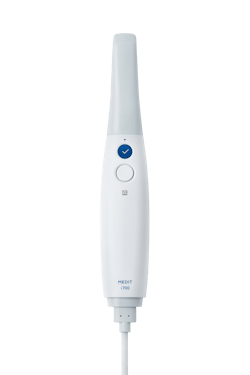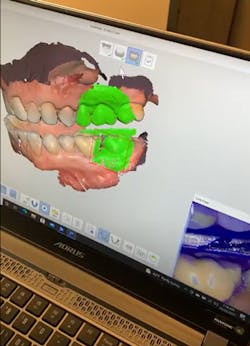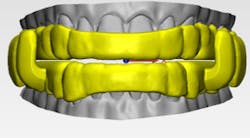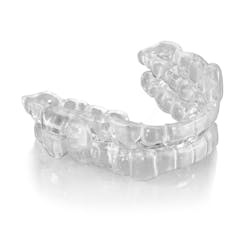Save time and money with the right digital impressions and oral appliances
The ancient Greeks had more than one word for time; chronos described the technical measurement of time in minutes, hours, days, and years, while kairos was more about how that time was spent. Adapting high-tech advancements and innovations in dental sleep medicine can impact both these metrics. You can save time, and in dentistry that means saving money. You can also feel less stressed and do more of the activities you treasure.
A provider’s hourly production in dental sleep medicine, $1,667, is just over five times the American Dental Association (ADA) average of $327. That makes chair time the most valuable asset we can leverage to save money. But I’m getting ahead of myself. It is not just about saving time or making more money by seeing another patient when you create efficiencies in impressions or device delivery. Rather, you may feel less stressed, you may finish earlier, and you may enjoy more time off and still produce the same revenue.
The chronos and kairos of techno innovation for dentists is more about the choices between time or money, and maybe even your own balance of both. Now, let’s see how digital impressions and precision oral appliances free you up to choose.
Decisions, and more decisions
There are a dozen digital intraoral scanners on the market, ranging from $5,000 to $25,000. The bells and whistles typically increase with price, as do the number of features and procedural capabilities. The low- to moderately-priced scanners consist of a handheld scanner and software, and work with most new and well-appointed laptops. The pricier systems are self-contained, and include a built-in computer and accompanying high-resolution flatscreen display on a wheeled base for easy maneuverability between operatories.
To choose the right scanner for your office, you need to answer a few questions. What do you want to accomplish with it right now? If you believe you’ll expand services in the future, will the scanner be capable of growing with you? Does the manufacturer stand behind its product with complementary software updates, upgrades, and expansion apps? How is the service after the sale? What’s the warranty and turnaround time on a malfunctioning unit? Is there a monthly subscription fee, and is what you get for that fee worth it?
I chose Medit scanners because they fulfill all the clinical parameters of the cases I use them for most frequently in my practice—capturing precise full arch scans for custom-fabricated sleep apnea devices—and they’re priced within my budget. They have a well-established customer base with a sizeable online presence. There are Facebook forums, training videos, and a community of like-minded colleagues who are eager to help.
Inputs with Medit scanners
Medit scanners (figure 1) allow me to easily scan an upper and lower full arch in under two minutes each (figure 2). The bilateral protrusive bite registration takes 10 to 15 seconds (figure 3). The whole shebang is completed in less than four minutes, with precision that not only meets but exceeds the tolerance of polyvinylsiloxane putty wash two-stage impressions (figure 4). That is the current American Academy of Dental Sleep Medicine (AADSM) precision standard.
The time with fast-set materials, 2.5 minutes for putty with a thin separator wrap, 2.5 for the wash times two, plus the bite registration, comes close to 12–13 minutes. Saving even eight minutes at the $23 per minute chair time value difference saves $184. Add the $45 average full arch material cost for PVS and you’ve just saved more than $200 per case. And we’re not done saving yet.
Outputs with Medit scanners
Most dentists have not received a business degree, thus we often look at the “cost at purchase” when trying to shave our expenses. By choosing precision milled monolithic medical devices such as ProSomnus EVO, you can save time and will experience an overall savings above the cost at purchase (figure 5). Add in reduced numbers of appointments for delivery issues, repairs, remakes, and side effects management, and the net savings is more than $300. With this innovative solution, time scheduled for delivery has been reduced by 15 minutes in our office, and by more time in other offices. Fifteen minutes at the above rate adds another $416 in savings. That $716 is far more than the cost at purchase on this stress-reducing, patient-preferred appliance. My team says that even if a competitor offered us their device for free, we would still choose EVO.
Technology frees us to better balance our work and life. Medit scanners quickly and predictably pay for themselves, and the math is accelerated for dental sleep medicine. The precision impression and bite inputs set up the manufacturing and delivery of a precision obstructive sleep apnea medical device that subsequently saves more time and money. Chronos, kairos, or cash. You choose!











